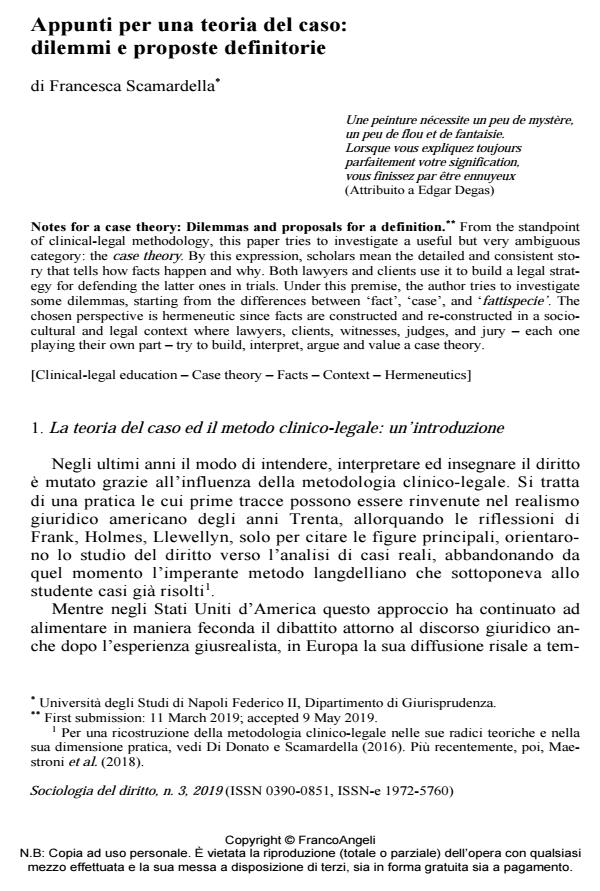Notes for a case theory: Dilemmas and proposals for a definition
Journal title SOCIOLOGIA DEL DIRITTO
Author/s Francesca Scamardella
Publishing Year 2020 Issue 2019/3
Language Italian Pages 19 P. 51-69 File size 198 KB
DOI 10.3280/SD2019-003003
DOI is like a bar code for intellectual property: to have more infomation
click here
Below, you can see the article first page
If you want to buy this article in PDF format, you can do it, following the instructions to buy download credits

FrancoAngeli is member of Publishers International Linking Association, Inc (PILA), a not-for-profit association which run the CrossRef service enabling links to and from online scholarly content.
From the standpoint of clinical-legal methodology, this paper tries to investigate a useful but very ambiguous category: the case theory. By this expression, scholars mean the detailed and consistent story that tells how facts happen and why. Both lawyers and clients use it to build a legal strategy for defending the latter ones in trials. Under this premise, the author tries to in-vestigate some dilemmas, starting from the differences between ‘fact’, ‘case’, and ‘fattispecie’. The chosen perspective is hermeneutic since facts are constructed and re-constructed in a so-cio-cultural and legal context where lawyers, clients, witnesses, judges, and jury - each one playing their own part - try to build, interpret, argue and value a case theory.
Keywords: Clinical-legal education, Case theory, Facts, Context, Hermeneutics
Francesca Scamardella, Appunti per una teoria del caso: dilemmi e proposte definitorie in "SOCIOLOGIA DEL DIRITTO " 3/2019, pp 51-69, DOI: 10.3280/SD2019-003003